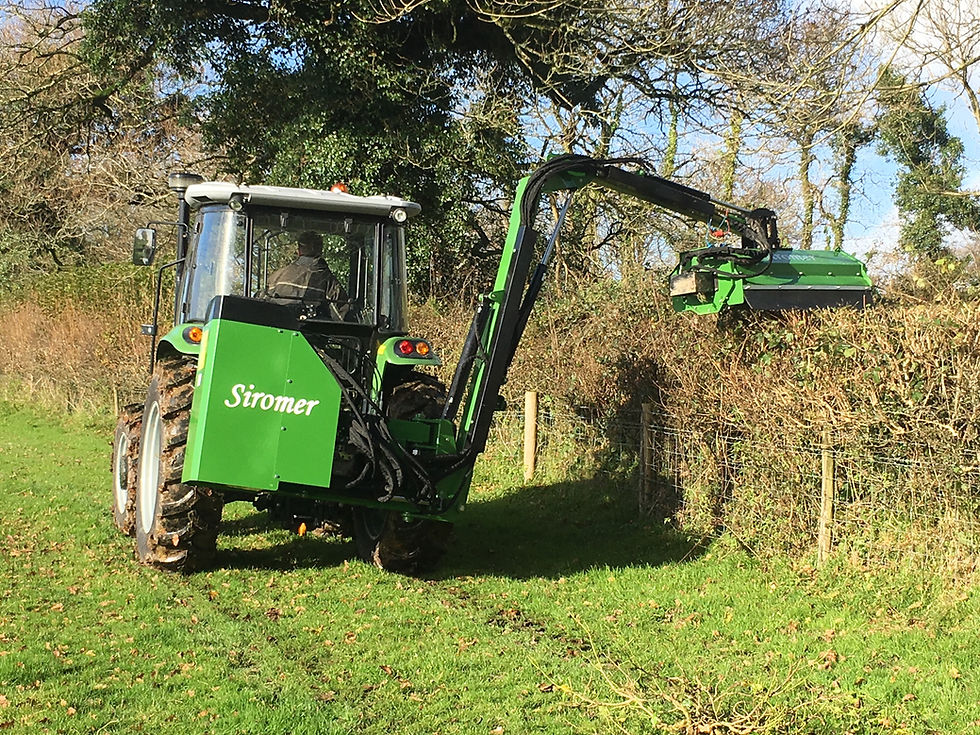IT’s Trimming Season
- Louise Howard
- Sep 28, 2018
- 3 min read
All hedges will need to be trimmed and kept under control at some point throughout the season, but when is the best time to take this on? The general rule is to cut hedgerows in late winter, when the plants are dormant and haven’t produced buds, this is particularly necessary if you are cutting back drastically, it will take much longer for the hedge to fill out and catch up if cut back too early. It also gives the wildlife all the time needed to take advantage of the nuts and berries produced by hedge plants in the autumn. The breading and nesting season, March 1st to 31st July, should always be avoided. Most tree and shrub flowers are produced on one year-old twigs, cutting at the wrong time of year can remove these twigs before there has been chance for regrowth, resulting in no flowers, no berries and no nuts, this has a big impact, not only on the health of the hedgerow itself but on the wide variety of wildlife that rely on the shelter, food and safety elements provided by these complex ecosystems.
Hedgerows are extremely important for local wildlife, but they are also functional, marking boundaries, keeping animals in or out of fields, assisting in flood control erosion, climate regulation, screening and noise reduction. With good growing conditions hedgerows quickly spread in size, good hedgerow management prevents them growing out into fields and reducing the land available for cropping and grazing, they are cut to keep them healthy, thick and bushy. Regular cutting also prevents the shading and loss of low-growing plants such as violets and primroses.

So, what is the best way to tackle these hedgerows? The invention of the tractor-mounted side-arm flail cutter 50 or so years ago revolutionised how hedgerows are maintained and is a popular method for landowners and local authorities alike. There are numerous types of tractor mounted hedge trimmers on the market to choose from, the most common of which is the flail head. Flail hedge cutters save a huge amount of time and effort when maintaining long lengths of hedges, this uses a hanging blade which rotates rapidly on a vertical plain, they cut and mulch woody growth very successfully. It is important that flails are kept in good condition and that the correct rotation and forward speeds are maintained so that thicker branches are not left ragged, bruised or with open wounds that can invite infection. Raising the cutting height by 10cm each time a cut is made will help.
The Ideal Equipment
There is a wide range of equipment designed for this task important. The Siromer Hedge Cutter is a very popular choice, there are different designs ensuring that you get the cut you require. Offering owners of 24hp and upwards and affordable and reliable option. All Siromer hedge trimmers have their own hydraulic tank so there is no need to be concerned about the tractor’s hydraulic capacity as the hedge trimmer runs off the PTO at 540 rpm.
The Finger bar Hedge Trimmer F60 is the lightest option with an impressive reach of 3.9m, it can cut on top of a 2.5m hedge, complete with a 1.90cm head.

The Siromer U44 is suitable for compact tractors 24hp and upwards with a unique feature of having an interchangeable flail and finger bar head giving you the ultimate versatility. The finger bar head is 130cm and there is an option of flail head either 80cm or 100cm. A great little machine with 2.5 cutting height and reversable flail direction. £3,850 + VAT buys you a machine that can suite the changing requirements of the land.


Hedge Cutting Tips and Hints
Try to cut in late winter. January or February.
Where possible, cut hedgerows every two or three years.
If hedgerows have to be cut annually, then try to cut the grass and plants at the base on a two or three year program to encourage wildlife.
Do not cut in nesting season, March to August.
Allow the hedge to flower and fruit.
Do not cut all hedgerows in the same year.
Always maintain flails to a good condition to avoid damaging the hedge.
Maintain the correct rotor and forward speeds.
A difference in hedge shapes and sizes will accommodate a wider range of wildlife.











